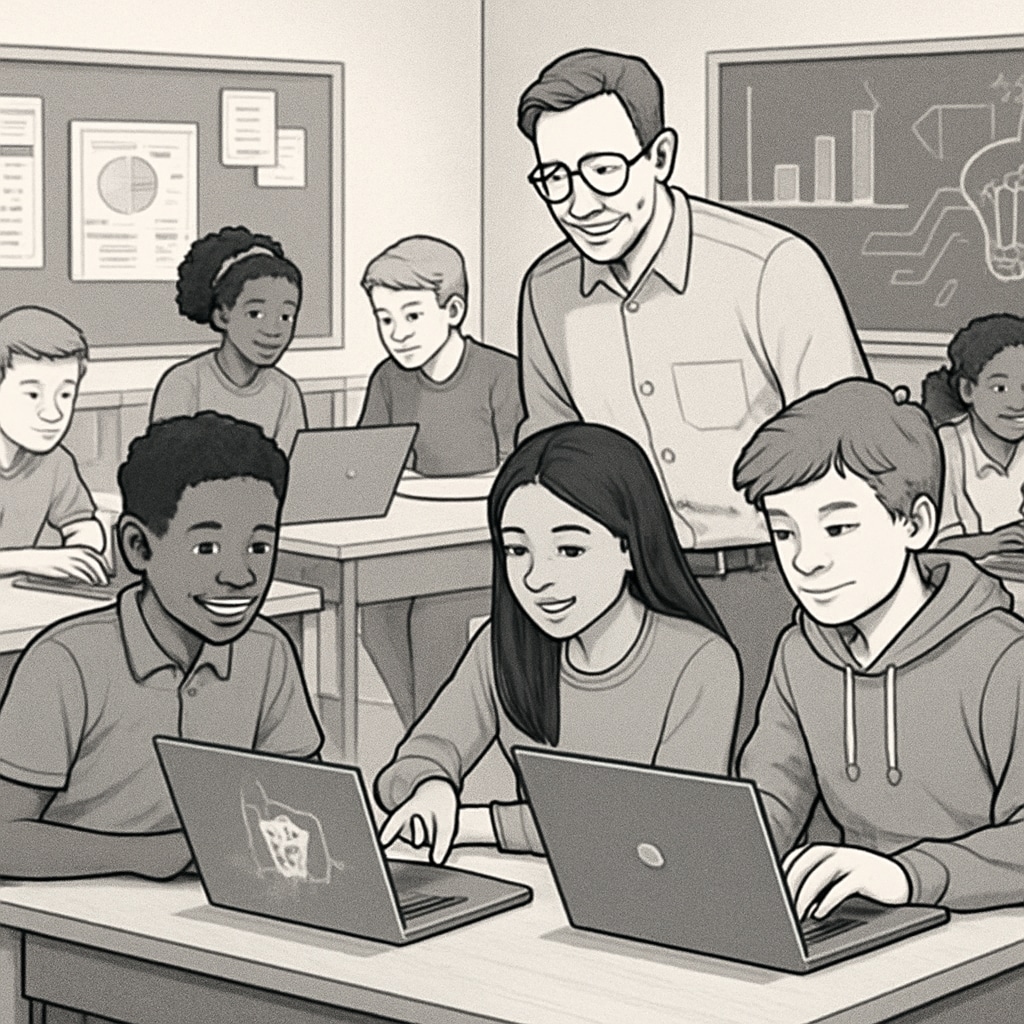In today’s digital age, leveraging “AI writing prompts, media literacy, and teaching resources” can make a significant difference in how high school students engage with and understand media. As artificial intelligence (AI) becomes increasingly prevalent in education, teachers have a unique opportunity to use it to foster critical thinking and creativity in grades 9-12. This article introduces five free AI-powered writing prompts that can seamlessly integrate with English, media studies, and creative writing curricula. These resources will not only help students analyze and create media more effectively but also prepare them for the challenges of the information-rich digital era.
Why Media Literacy Matters in the AI Era
Media literacy—the ability to critically analyze, evaluate, and create media content—is an essential skill in the 21st century. With the rise of AI-generated content, distinguishing between authentic and fabricated information has become more challenging than ever. For example, tools like ChatGPT or DALL·E can generate convincing news articles or images, which makes it crucial for students to question sources, context, and intent.
Incorporating AI tools into the classroom can help students better understand these technologies while simultaneously enhancing their analytical skills. Teachers can guide students in exploring how AI influences media production and consumption, ultimately fostering a deeper appreciation for ethical content creation.

5 Free AI Writing Prompts to Enhance Media Literacy
The following AI writing prompts are designed to improve students’ understanding of media literacy while encouraging creativity and collaboration. Teachers can adapt these prompts to suit different subjects and learning objectives.
- Deconstructing Fake News: Use an AI tool like ChatGPT to generate a fictitious news article. Ask students to analyze the article’s language, tone, and structure to identify red flags that indicate false information. Discuss how AI can both contribute to and combat the spread of misinformation.
- Analyzing Film Scripts: Provide students with an AI-generated film script and ask them to critique its structure, dialogue, and emotional impact. Students can then rewrite scenes to improve character development or plot coherence, combining creative writing with critical analysis.
- Exploring Bias in Algorithms: Share examples of AI-generated content that reflect implicit biases (e.g., stereotypical portrayals in storytelling). Encourage students to reflect on the ethical implications of such biases and brainstorm strategies to create more inclusive content.
- Creating Multimedia Campaigns: Ask students to use AI tools to create multimedia campaigns (videos, posters, or social media posts) on a topic of their choice. The activity fosters collaboration, creativity, and an understanding of how media influences public opinion.
- Writing Film Reviews with AI Assistance: Assign students to watch a short film or documentary and write a review. They can use AI to generate ideas or structure their review, but they must critically evaluate the AI’s suggestions and refine their final work independently.
Integrating AI Tools into the Classroom: Best Practices
While AI can be a powerful teaching resource, its use must be intentional and guided. Here are some best practices for integrating AI tools into high school classrooms:
- Set Clear Objectives: Clearly define the learning goals for each activity. For example, determine whether the focus is on improving critical analysis, ethical understanding, or creative expression.
- Encourage Collaboration: Many AI activities work best when students collaborate in small groups, allowing them to share perspectives and build teamwork skills.
- Teach Ethical Use: Highlight the ethical considerations of using AI in media creation, including the importance of transparency and avoiding plagiarism.
- Balance AI and Human Input: Ensure that students use AI as a tool, not a replacement for their own critical thinking and creativity.

Conclusion: Empowering Students for the Digital Future
The integration of “AI writing prompts, media literacy, and teaching resources” in high school classrooms is a game-changer for educators. By leveraging AI tools purposefully, teachers can help students develop critical media skills, foster creativity, and navigate the complexities of the digital age with confidence. These five free AI writing prompts provide a practical starting point for enhancing media literacy while making lessons more engaging and relevant to today’s world.
As educators continue to explore the potential of AI in education, it is essential to prioritize ethics, inclusivity, and critical thinking. By doing so, we can ensure that students are not only consumers of media but also thoughtful and responsible creators.


